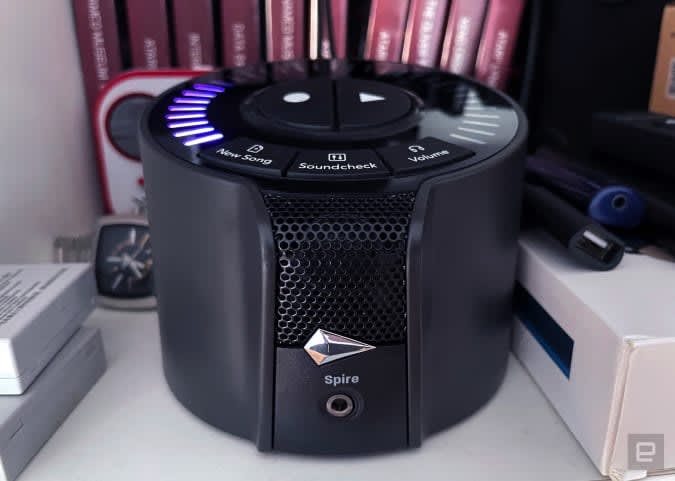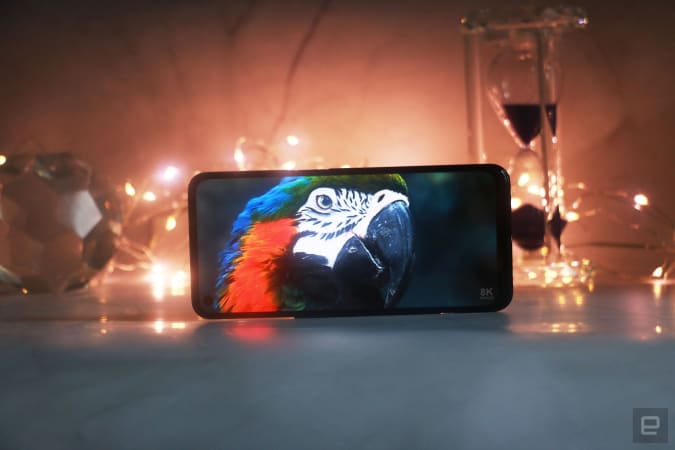ICYMI: Toyota’s 2021 Sienna is a stress-free people mover | Engadget Leave a comment
All products recommended by Engadget are selected by our editorial team, independent of our parent company. Some of our stories include affiliate links. If you buy something through one of these links, we may earn an affiliate commission.
This week we reviewed gadgets that surprised us, and a few that disappointed us. First, Devindra Hardawar had to change his stance on minivans after driving the 2021 Toyota Sienna. Next, Cherlynn Low tested the HP Elite Folio laptop, which left a lot to be desired in the software department. Cherlynn also tried out the OnePlus Nord N200 5G, which is a bargain if you don’t care about performance lag and low-end camera features. And finally, James Trew played with the second-gen iZotope Spire portable studio that received some upgrades, but still lacks one key feature.
Devindra Hardawar/Engadget
Though they often provide more safety, features and space than other vehicles, minivans have some stigma attached to them. Devindra Hardawar has been staunchly anti-minivan for a long time, but the 2021 Sienna has changed his mind. It has a sportier style with sharp lines, a large grill, an 11.6-inch infotainment screen for second and third-row passengers, and because it’s a hybrid, it offers at least 35 MPG of combined mileage with all-wheel drive. It’s also competitively priced starting at $34,460 (though the Limited model Devindra tested starts at $50,085).
After driving both his parents and his daughter around, Devindra was surprised to find the 2.5-liter, four-cylinder engine and dual electric motors to be smooth and responsive even when passing on the highway. And he was consistently impressed by how much more room he had. The last row of seats can be easily laid flat with the tug of a string, providing additional cargo space and making grocery runs less stressful. He also liked the included Safety Sense 2.0 technology, which helps identify pedestrians, adjust steering if the vehicle drifts and uses radar-assisted cruise control to keep a safe distance from other cars.

Cherlynn Low/Engadget
Cherlynn Low says the new HP Elite Folio laptop falls in line with the company’s reputation for producing eye-catching laptops. The new machine features a classy leather build, reliable LTE connectivity and a stylus with Wacom technology — all of which help justify its $1,889 price tag. It also features a pull-forward touchscreen with a 3:2 aspect ratio, a solid 15+ hour battery life and loud and clear speakers. Cherlynn said she liked the keyboard as well because of its adjustable backlighting and well-spaced layout.
Despite all these promising features, Cherlynn found the overall user experience to be messy. The Qualcomm Snapdragon 8cx Gen 2, 16GB of RAM and Windows on ARM software lagged when she switched between Word documents and Slack. She also said the laptop could use a lock to set the screen in place after sliding it forward because the panel would occasionally pop out of the lid, which is a less-than-ideal thing to happen when you’re in the middle of working.

James Trew/Engadget
James Trew was impressed by iZotope’s Spire Studio. The portable, mobile-connected recording device has an unusual and playful design and lets musicians carry a “studio” with them via the built-in mic, storage and two combi-XLR ports. He called it a “curious but compelling proposition,” so he was looking forward to checking out the refreshed model that adds more onboard storage (up to eight hours of recording), revised pre-amps with improved interference rejection and higher volume, plus Wi-Fi and Bluetooth connectivity.
James says it’s easy to see why the Spire might be favored by both amateurs and professionals because it’s straightforward yet incredibly capable. He found the companion software to be accurate when reducing the external noise, and says the app overall is very user-friendly. He says the improvements made to the second-gen Spire made the already solid device even better, but he’s still longing for the day when he’ll be able to connect the device to a computer via USB. The upgrades come at a cost — precisely $150 more than the first-gen, which brings the whole unit up to $499.

Cherlynn Low/Engadget
A $240 smartphone with 5G sounds like a deal too good to be true, so Cherlynn Low tested the OnePlus Nord N200 5G to see how it fared. While the sturdily built smartphone has a 6.49-inch HD+ LCD screen that refreshes at 90Hz, Cherlynn said she missed the colors and contrast levels offered by competing OLED screens. And although she likes the clean UI of OxygenOS 11, the lower-end Snapdragon 480 processor lagged and stalled when she switched between the camera and other apps.
The Nord N200 also features a triple camera system consisting of a 13-megapixel main sensor, a 2-megapixel macro lens and a 2-megapixel monochrome lens. While that looks alright on paper for a budget smartphone, Cherlynn said all the shots she took looked dull, especially when compared to the same shots taken by a $350 Pixel 4a. She also said that nightscapes were blurry and noisy, and OnePlus’ night mode didn’t do much to fix that. The battery did last over 17 hours during testing, but she still felt like this T-Mobile exclusive would only be suitable for diehard OnePlus fans with tight budgets who are eager to hop onto 5G.
